Benefits Of Hill Sprints: 6 Surprising Advantages + Tips
Author:
Unlock your full potential by engaging with our experts and community! Have questions about your fitness journey or looking for expert advice on weightlifting techniques? Don’t hesitate — leave a comment below and Oleksandr Zagrebelnyi will provide a personalized answer and insights to help you reach your goals.
Torokhtiy is reader-supported. Some links are affiliate links, and we may earn a commission at no extra cost to you. See our disclosure page for details.
Sprinting, in general, is one of the most taxing physical activities you can do. Yet, uphill springs have a tremendous impact on your explosiveness and overall performance. In today’s article, we’ll talk about the benefits of hill sprints and explain how they can take your physical endurance to a new level.
The benefits of hill sprints include increased mental strength and tenacity, reduced risk of dangerous injuries, and a positive impact on your stamina.
This intense physical activity is extremely useful for all sports, so today we’ll take a deep dive into the benefits of running hill sprints.
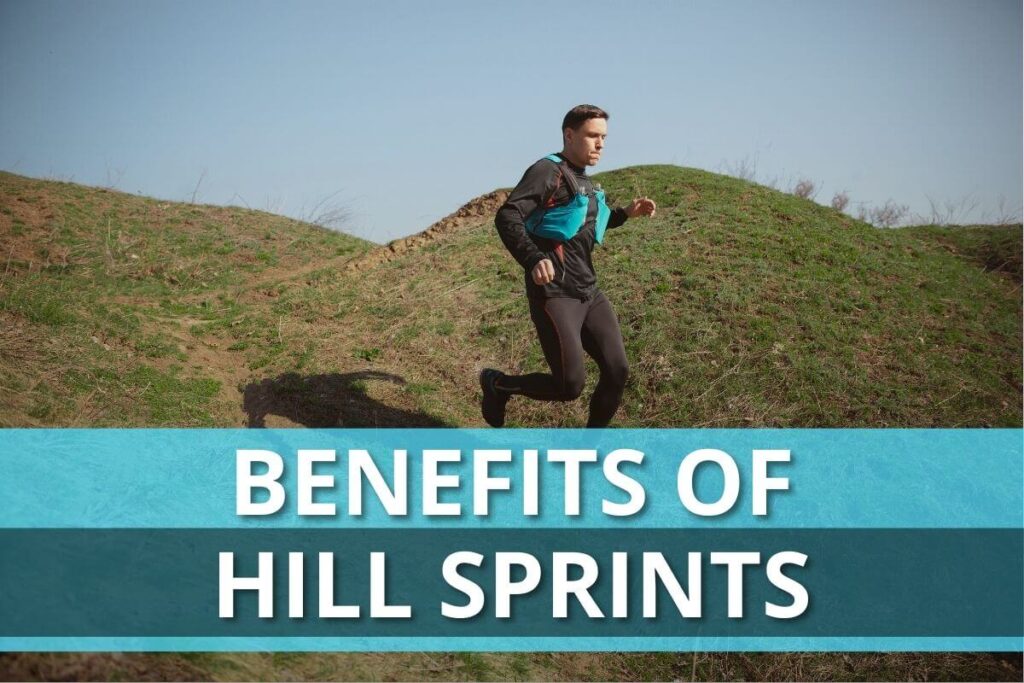
What Are Hill Sprints?
While many people dread doing sprints, uphill sprints are incredibly powerful and useful for endurance sports. They basically involve running as fast as you can uphill for a short period of time. Workouts that involve incline sprints are relatively short – about 20 minutes or so – focusing more on intensity than volume.
So who should actually do uphill sprints? Generally speaking, they’re recommended for general health and a boost in endurance. People who are professional sprinters will obviously enjoy the benefits of hill sprints the most, but if you’re into fitness as a whole, you can also gain additional strength from these workouts.
This physical activity tends to benefit all types of sports, as long as your goals include strength, explosiveness, endurance, and stamina.
6 Benefits Of Hill Sprints
Now that you understand how this type of training works, let’s delve deeper into the benefits of hill sprints.
✅ Strengthen Your Leg Muscles
Many people know that squats are a good way to strengthen the legs, but hill sprints are equally as effective. Explosive power used in uphill sprints will pump up your legs and make them work harder, as opposed to sprinting on a flat surface.
This increases the tension on the muscles, which sends a signal to the body that it’s time to grow and strengthen. Not only will your quadriceps get stronger, but your calves, hamstrings, and glutes as well.
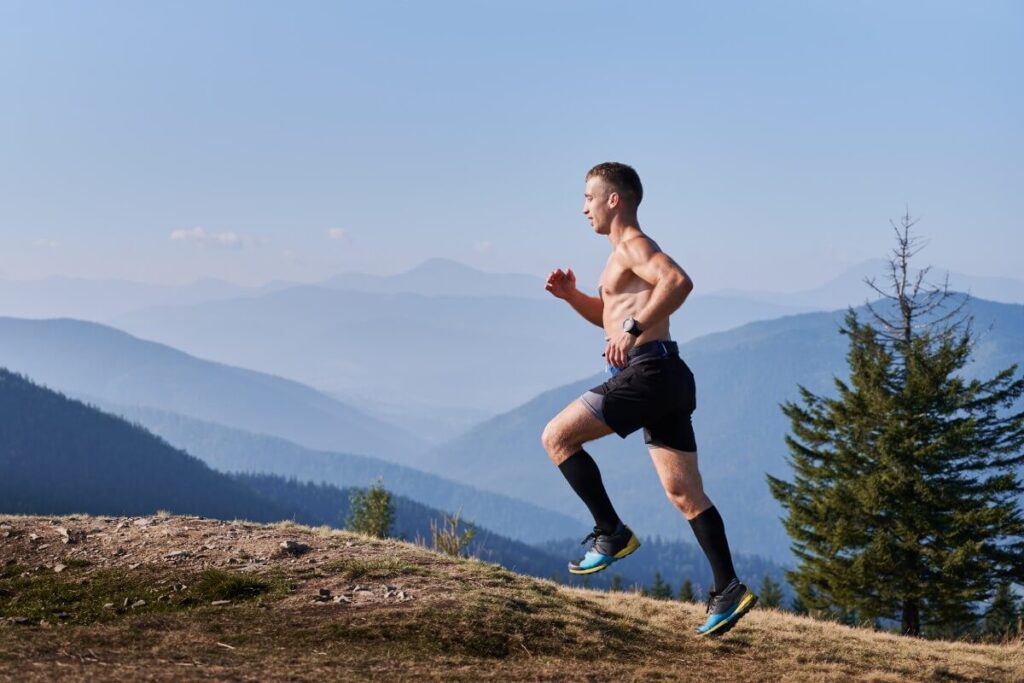
✅ Increase Stamina Dramatically
If you find yourself getting tired after a simple walk to the shop, it might be time to try your first hill sprint workout. This activity makes you reach your maximum heart rate rapidly, which you can’t do by walking or even jogging.
Day by day, workout by workout, you’ll feel better and better and recover your breath faster. The body will adapt to the intense workout and you will be able to sprint even more.
After a while, you’ll notice you can run for longer periods of time and perform daily walking much easier. Having stamina is great for longevity, but also for being able to sleep well, decreasing the risk of injuries, and feeling ready for daily activities.
✅ Make You Faster
Do hill sprints make you faster? Yes! Using hill sprints for speed is incredibly effective. Running up hills helps you get faster through increased stamina and leg strength. When you run on a “normal” flat surface, you’ll find that you are significantly faster.
✅ Reduce The Potential For Injuries
Sprinting on a flat surface allows you to reach relatively high speeds, which results in more pounding on your joints and an increased risk of injuries. What does running up a hill do, in comparison? It provides a similar workout in terms of effort, but with less speed and pounding, which means less risk of injury.
✅ Build Mental Strength
Performing a hill sprint workout requires self-discipline that many people don’t have. It involves willingly putting yourself through stress. That’s how hill sprinting strengthens your mind and builds discipline. With this discipline and confidence, many other aspects of your life will improve as well.
✅ Accelerate Your Metabolism
The good news for those who feel sluggish or struggle to lose weight is that the benefits of hill sprints and other high-intensity interval training (HIIT) include metabolism acceleration. Kickstarting your metabolism means it burns more calories even while resting. In addition, the workout alone will burn more calories than flat sprinting or running.
2 Disadvantages Of Running Uphill
As with everything, there are a few disadvantages of hill sprints. These include:
❌ They’re Very Hard For Most People
Most people find uphill sprints incredibly taxing. Even if they overcome that obstacle and start performing them often, it’s hard to even get into them. If you’re someone with average stamina, chances are you’re going to find incline sprints hard even for 30 seconds, let alone five or 10 minutes. While your stamina will increase eventually, it’s vital to be patient and do the hard work.
❌ Not Suitable For Covering Long Distances
During a hill sprint workout, you won’t cover long distances. This might not be ideal for people who are used to running 10 miles during a more moderate run. When sprinting uphill, you can’t cover big distances, which means you won’t prioritize covering big hauls and enjoying the view while you’re at it.
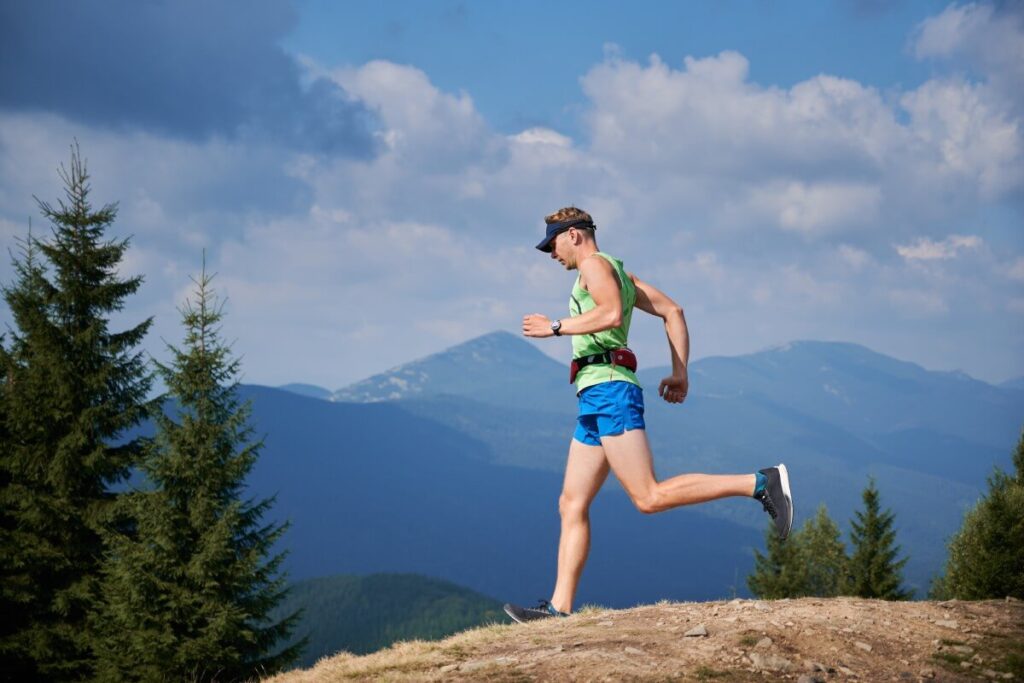
How Many Hill Sprints Should I Do?
One of the most frequent questions people have is “How many hill sprints should I do?” As with most forms of training, the answer is that it depends. Each person’s body, fitness level, and goals are different, so the way they use this workout will be unique to their specific situation.
Since uphill sprints are a form of HIIT, the recommended maximum workout length is about 20 minutes. HIIT workouts are typically performed for anywhere from 9 to 20 minutes. Here’s our recommendation on how many hill sprints you should do for an effective workout.
1. The Warm-Up
It is important to always do a proper warm-up before sprinting. This helps prevent injuries to your muscles, tendons, and ligaments. Instead of starting with a sprint, do light, relaxed jogging until you get to the hill you intend to sprint up.
2. Finding An Appropriate Hill
When looking for the right hill, there are two factors to consider: angle and length. In general, a 10 to 20 percent grade is good to start on, although you can move up to 30 percent when you become stronger.
As far as length goes, the hill should ideally be between 80 to 100 meters. This will allow for a constant sprint without unnecessary interruptions. It will also allow you to slow things down or speed them up and experiment with the intensity of the workout.
Once you find the hill, start by sprinting for 10 seconds and give it all you got! When you’re out of breath, your sprint is done. Time for the next phase.
3. Recovering Downhill
Turn around and start going downhill, trying to maintain an easy jog. If you’re too tired, you can slowly walk, but try to maintain a consistent tempo until you reach the bottom of the hill. Once you get to the bottom, turn around and repeat the entire process for as long as you feel comfortable.
How Many Hill Sprints Should I Do Per Week?
We recommend doing 2 hill sprint workout sessions a week. If this is your only intense physical activity, two times a week is more than enough. But if you’re lifting weights or doing other sports, one time per week should give you great results.
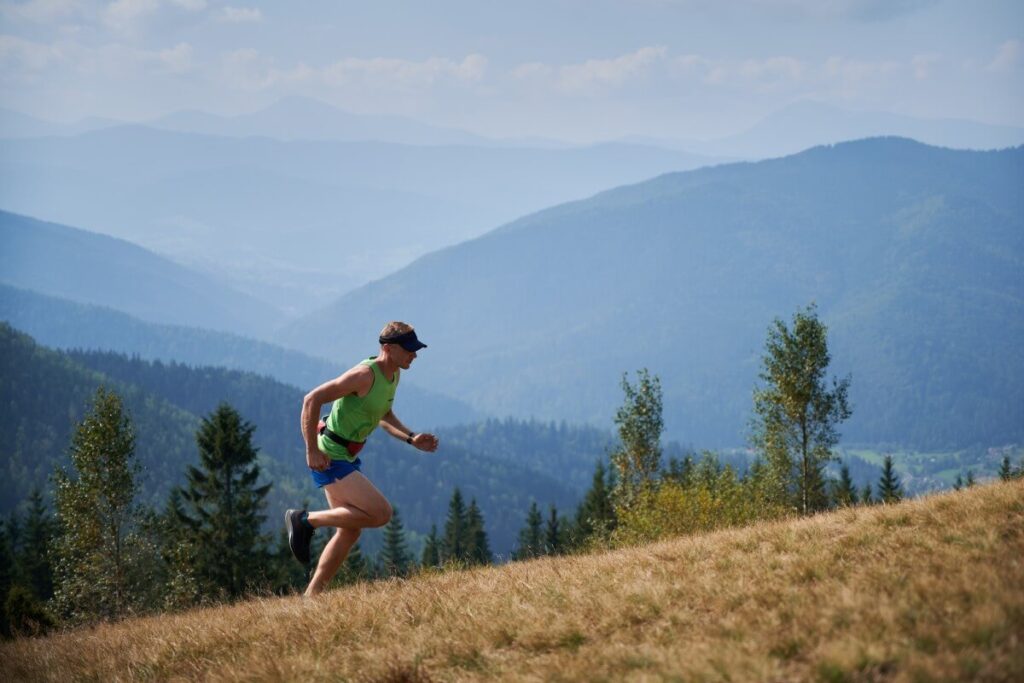
How Quickly Will You See The Results Of Running Hill Sprints?
This depends on many factors, including your current stamina, weight, and general physical fitness. However, with HIIT workouts, it’s common to see incremental changes after the first two or three workouts.
You’ll notice you can run longer and with better stamina, and that you require less rest. Of course, other forms of training and nutrition also play a major role.
Hoka Bondi 8
- Material: Breathable and supportive mesh upper
- Sole Material: Full-length EVA midsole for maximum cushioning
- Outsole (tread feature): Durable rubber outsole with a unique lug pattern
- Drop: 4mm
- Season: Suitable for all seasons
- Special Features: Exceptional cushioning and comfort
- Size: Available in various sizes
- Type: Maximum cushioning running shoe
If you want excellent running or walking shoes or just footwear you’ll be comfortable in, you can’t go wrong with the Hoka Bondi 8.
It’s been upgraded and now they have lighter, softer materials and a new extended heel design. The heel design gives a super soft, balanced feeling from th emoment your heel hits the ground to when you push off with your toes.
As far as the weight goes, it’s around 10.80 ounces, and the heel drop is 4 mm. They’re not too heavy and the lower drop is a good balance between cushioning and feeling connected to the ground.
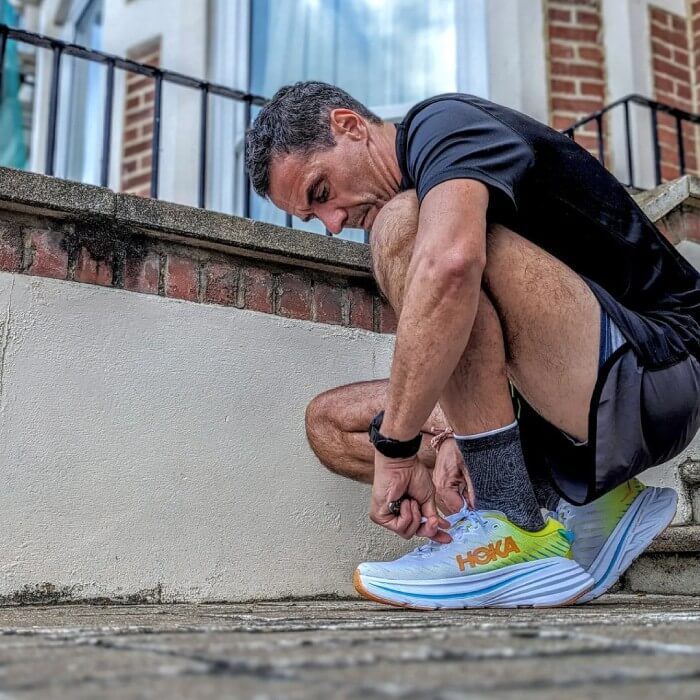
The Bondi 8 is focused on cushioning and keeps things simple. There’s a good amount of support without any extra stuff that you don’t really need and that would only jack up the price. Take the rear crash pad, for example – it makes for a soft, smooth ride, which is perfect if you like to run outdoors.
The upper part is made of engineered mesh, which is breathable and keeps your feet cool and dry. The tongue and collar have memory foam and mold to your foot shape. All of these features make the fit snug but flexible, which is exactly what you would want.
The Bondi 8 is eco-friendly because it uses recyclable materials in parts like the mesh and the sockliner. Plus, the shoes are completely vegan, which (if that’s important to you) is nice!
FAQ
Are Hill Sprints Good For You?
Hill sprints are good for your overall health, injury prevention, and physical/mental strength. Hill sprints muscles worked include quadriceps, glutes, hamstrings, and even calves, making your legs significantly stronger and more toned.
How Many Hill Sprints Is A Good Workout?
A good hill sprint workout should be about 20 minutes and 2-3 times per week. This will be enough for a beginner or intermediate athlete.
Hill Sprints Vs Flat Sprints: What Is The Difference?
Hill sprints are superior to flat sprints. They increase your stamina because you’re going uphill and help you produce more power compared to the flat sprint. Flat sprints will also be improved with hill sprint workout sessions, as hill sprints are more intense and harder to complete.
Conclusion
In summary, the benefits of running hill sprints include increased stamina, improved strength, a faster metabolism, enhanced mental strength, and a faster running pace. It is a good way to make your traditional running workouts more diverse and boost your power and performance.
Do you love sprinting uphill, or have you historically avoided these types of workouts? Tell us about your experiences in the comments section.
Also read:
References:
- Want to Get Faster? RUN HILLS (FULL WORKOUT) // Simone Baseball Performance: https://simonebaseballperformance.org/2019/12/16/want-to-get-faster-run-hills-full-workout/
- Hill Sprints Workouts For Running Speed, Power and Efficiency // Training 4 Endurance: https://training4endurance.co.uk/hill-sprints-workout-running-speed/
- 4 Powerful Hill Workouts That Provide Major Benefits // Nike: https://www.nike.com/a/hill-sprints-workout-benefits
- Hill Sprints: Become a Faster and Stronger Runner, Quicker // Run Trails: https://runtrails.org/hill-sprints
- Photos are made by Torokhtiy Media Team, ArtPhoto_studio, master1305 FREEPICK
Why Trust Us?
With over 20 years in Olympic weightlifting, strength training, nutrition coaching, and general fitness our team does its best to provide the audience with ultimate support and meet the needs and requirements of advanced athletes and professional lifters, as well as people who strive to open new opportunities and develop their physical capabilities with us.
By trusting the recommendations of our certified experts in coaching, nutrition, and sports training programming, as well as scientific consultants, and physiotherapists, we provide you with thorough, well-considered, and scientifically proven content. All the information given in the articles concerning workout programming, separate exercises, and athletic performance, in general, is based on verified data.
The product testing process is described in more detail here.
Oleksandr is a running coach and member of the Nike Run Club coaching team for 8 years. A participant in national and international competitions at distances from one kilometer to the ultra trail. Owner of mountain trail running camps. Nowadays Oleksandr is responsible for creating running training programs for athletes of various levels, coaching personally offline and online, conducts trail running camps in the mountains, participates in competitions.




Still have questions after reading our article? Unlock your full potential by engaging with our experts and community! Don’t hesitate — leave a comment below and Oleksandr Zagrebelnyi will provide a personalized answer and insights to help you reach your goals.